#LearningWings
Explore tagged Tumblr posts
Text
The Hidden Risks of Hazmat Emergencies and How Specialized Training Saves Lives
Hazardous material (hazmat) emergencies pose a serious threat to public safety, the environment, and operational continuity. Without proper incident response preparation, these emergencies can spiral into disasters. At Signet North America, we offer specialized, in-person hazmat training designed to equip organizations with the skills and knowledge they need to respond effectively and protect lives.
The Overlooked Dangers of Hazmat Emergencies
Many organizations underestimate the risks associated with hazardous materials. Whether it’s a chemical spill, gas leak, or fire involving volatile substances, hazmat emergencies demand immediate, informed action to minimize harm.
Key risks include:
Health Hazards: Exposure to toxic chemicals or fumes can lead to severe injuries or long-term health consequences.
Environmental Impact: Spills can contaminate soil and water sources, requiring extensive cleanup and legal repercussions.
Operational Downtime: Delayed response can disrupt operations, leading to significant financial losses.
Legal and Regulatory Penalties: Non-compliance with OSHA or EPA regulations can result in fines or lawsuits.
The Role of Specialized Training
Effective incident response is only possible with the right training. Signet North America provides hands-on, professional training that prepares teams to handle hazmat emergencies confidently and competently.
What Makes Our Training Stand Out?
1. Hands-On LearningWe emphasize practical exercises and real-world scenarios to ensure participants can apply their training directly in the field.
2. Customized ProgramsEvery facility is unique, and so are its hazmat challenges. Our training programs are tailored to align with your organization’s specific materials, processes, and risks.
3. Regulatory AwarenessParticipants learn how to navigate OSHA, EPA, and other regulatory requirements, ensuring compliance while managing emergencies effectively.
4. Incident Response TechniquesFrom containment and decontamination to emergency response coordination, our training covers all aspects of managing hazmat incidents.
5. Confidence BuildingBy equipping teams with actionable skills and knowledge, we instill the confidence needed to respond swiftly and effectively in high-pressure situations.
Why In-Person Training Matters
In-person training is unparalleled in its ability to simulate real-life scenarios and foster active participation. At Signet North America, we bring training directly to your facility, ensuring that participants practice in the same environment where they’ll respond to emergencies.
Benefits of On-Site Training:
Familiarity with facility-specific risks and resources.
Opportunities to address unique operational challenges.
Immediate feedback and personalized guidance from experienced trainers.
How Specialized Training Saves Lives
Professional hazmat training is an investment in safety and preparedness. Here’s how it makes a life-saving difference:
Quick Response Time: Trained personnel can assess and act swiftly, reducing exposure and preventing escalation.
Effective Containment: Proper techniques minimize the spread of hazardous materials, protecting people and property.
Seamless Collaboration: Training fosters clear communication and coordination with local emergency responders.
Improved Safety Culture: Organizations with trained teams demonstrate a commitment to safety, encouraging vigilance and adherence to protocols.
Partner with Signet North America
With over 150 years of combined experience, Signet North America is a trusted leader in hazmat training. We work with organizations across industries, including fire departments, hospitals, manufacturing plants, and storage facilities, to deliver training that meets their unique needs.
When you choose Signet North America, you’re not just preparing your team—you’re protecting lives, assets, and the environment.
Schedule Your Training Today
Don’t wait for an emergency to realize the value of preparedness. Equip your team with the knowledge and confidence they need to respond effectively to hazmat incidents.
Call us at 877-875-2921 and bring any of our classes directly to you and your team. Let’s work together to create a safer, more resilient future for your organization.
0 notes
Text
6-month Industrial Training in Jalandhar
Master Your Skills with 6-Month Industrial Training in Jalandhar at TechCadd
In today’s competitive job market, hands-on experience and practical knowledge are more important than ever. Whether you are a student looking to boost your career or a professional aiming to upgrade your skills, 6-month industrial training in Jalandhar is a game-changer. At TechCadd, we offer an unparalleled training program tailored to meet industry standards and bridge the gap between theoretical knowledge and real-world application.
Why Choose TechCadd for 6-Month Industrial Training in Jalandhar?
TechCadd is a leading name in skill development, offering cutting-edge training solutions for individuals aiming to excel in their respective fields. Our 6-month industrial training in Jalandhar is designed to provide comprehensive learning experiences in various domains, including digital marketing, software development, web design, data science, and more.
Here’s why TechCadd stands out:
Industry-Relevant CurriculumOur training modules are developed in collaboration with industry experts, ensuring that the skills you gain are up-to-date and in high demand.
Hands-On LearningWe emphasize practical training through live projects, case studies, and workshops to give you real-world exposure.
Experienced MentorsLearn from seasoned professionals with years of experience in their respective industries.
State-of-the-Art FacilitiesOur training centers are equipped with advanced technology, offering a conducive learning environment.
Placement AssistanceWe don’t just train you; we help you land the job of your dreams with our dedicated placement support.
Benefits of 6-Month Industrial Training
6-month industrial training in Jalandhar at TechCadd is more than just a course—it’s a transformative experience that equips you with skills, confidence, and a competitive edge. Here are the key benefits:
Enhances Your ResumePractical experience gained through industrial training adds value to your resume and makes you stand out to employers.
Skill DevelopmentLearn in-demand tools, technologies, and methodologies that are relevant to today’s job market.
Industry ExposureWorking on live projects gives you a taste of how industries operate, preparing you for real challenges.
Boosts EmployabilityMany companies prefer candidates with practical experience, and our training ensures you are job-ready.
Personalized LearningAt TechCadd, we tailor our approach to meet the learning pace and style of every individual.
Who Should Join This Training?
TechCadd’s 6-month industrial training in Jalandhar is ideal for:
Final-year students looking to complete their mandatory training.
Fresh graduates aiming to enhance their employability.
Professionals seeking to upskill or switch careers.
Enthusiasts passionate about learning new technologies.
Courses Offered Under 6-Month Industrial Training
We offer a diverse range of courses to cater to varied interests and career goals. Some of the popular training programs include:
Web DevelopmentLearn HTML, CSS, JavaScript, and frameworks like React and Angular. Build responsive, dynamic websites and applications.
Digital MarketingMaster SEO, PPC, content marketing, and social media strategies to become a digital marketing expert.
Data ScienceDive into Python, R, machine learning, and data visualization to explore a thriving career in data science.
Graphic DesignUnleash your creativity with tools like Photoshop, Illustrator, and InDesign.
Software DevelopmentGain proficiency in Java, Python, or .NET to develop robust software solutions.
Key Features of TechCadd’s 6-Month Industrial Training in Jalandhar
Our 6-month industrial training in Jalandhar is packed with unique features to ensure a rewarding learning experience:
Live ProjectsWork on real-time projects that challenge you and hone your skills.
CertificationsEarn industry-recognized certifications upon course completion.
Mock InterviewsPrepare for job interviews with mock sessions conducted by industry experts.
Flexible TimingsWe offer flexible schedules to accommodate students and working professionals.
Networking OpportunitiesConnect with peers, mentors, and industry leaders, creating opportunities for future collaborations.
Placement Success
Over the years, TechCadd has helped numerous students achieve their career goals. Thanks to our robust training and placement assistance, our training alumni are placed in top companies across the globe.
How to Enroll?
Enrolling in our 6-month industrial training in Jalandhar is easy. Visit our website, browse through the courses, and register online. Alternatively, you can visit our center for a free consultation to choose the right program for your career goals.
Conclusion
If you’re looking for the perfect blend of knowledge, skill development, and career growth, TechCadd’s 6-month industrial training in Jalandhar is your answer. Don’t just learn—experience, innovate, and excel. Start your journey with TechCadd today and take the first step towards a promising future.
For more information, contact us or visit our training center in Jalandhar. Let’s build your dream career together!
0 notes
Text
Library Lesson Plans for Collaborative Learning
Library lesson plans are invaluable tools for educators seeking to cultivate a love for learning, critical thinking skills, and information literacy among students. These meticulously crafted plans serve as a roadmap to guide librarians and teachers in creating engaging and purposeful library sessions. By integrating various resources, activities, and objectives, library lesson plans enable educators to harness the vast potential of libraries as dynamic learning environments. These plans not only promote a deep understanding of diverse subjects but also nurture essential research and inquiry skills, encouraging students to become independent learners. Whether it's introducing students to the wonders of literature, fostering digital literacy, or guiding them through the intricacies of information evaluation, library lesson plans play a pivotal role in shaping students' intellectual growth. Furthermore, these plans offer flexibility, allowing educators to adapt them to the unique needs and interests of their students. In an era of rapidly evolving information and technology, library lesson plans empower educators to create meaningful and enriching library experiences that inspire lifelong learning and equip students with the skills they need to thrive in the modern world.
Introduction to Library Lesson Plans for Collaborative Learning
We will provide an overview of library lesson plans designed to foster collaborative learning. We will explore the importance of collaboration in educational settings and how libraries can play a crucial role in facilitating this process. Additionally, we will discuss the benefits of using lesson plans specifically tailored to encourage collaboration among students, and highlight the key elements that make these plans effective.
Strategies for Creating Engaging Library Lesson Plans
We will delve into various strategies for developing engaging library lesson plans that promote collaborative learning. We will discuss the importance of setting clear objectives and aligning lesson plans with curriculum standards. Furthermore, we will explore creative instructional techniques such as group projects, cooperative learning activities, and problem-solving tasks that encourage active participation and interaction among students.
Incorporating Information Literacy Skills in Library Lesson Plans
Information literacy is a crucial skillset for students in the digital age. In this section, we will explore how library lesson plans can effectively integrate information literacy skills into collaborative learning activities. We will discuss the importance of teaching students how to evaluate and use information from diverse sources, navigate digital resources, and critically analyze information to make informed decisions. Practical examples and resources for incorporating information literacy skills into lesson plans will also be provided.
Assessing Collaborative Learning in Library Lesson Plans
Assessment is an essential component of any educational plan. In this section, we will focus on methods and strategies for assessing collaborative learning in library lesson plans. We will discuss various assessment tools and techniques, such as rubrics, self-reflection activities, and peer evaluations, that can effectively measure individual and group learning outcomes. Moreover, we will explore the importance of providing constructive feedback to students to enhance their collaborative skills.
Adapting Library Lesson Plans for Different Grade Levels and Subjects
Collaborative learning can be implemented across various grade levels and subjects. In this section, we will explore how library lesson plans can be adapted to meet the specific needs and requirements of different grade levels and subjects. We will discuss examples of collaborative learning activities suitable for early childhood, elementary, middle, and high school students. Additionally, we will provide guidelines for modifying lesson plans to align with different subject areas, such as language arts, science, mathematics, and social studies.
Integrating Technology into Library Lesson Plans for Collaborative Learning
Technology plays a significant role in contemporary education. In this section, we will explore how library lesson plans can incorporate technology to enhance collaborative learning experiences. We will discuss the integration of digital tools, such as online platforms, multimedia resources, and virtual collaboration platforms, to facilitate communication, information sharing, and collaborative projects among students. Moreover, we will provide examples of effective technology integration in library lesson plans.
Promoting Diversity and Inclusivity in Collaborative Library Lesson Plans
Inclusive education promotes diversity and celebrates the unique backgrounds and perspectives of all students. In this section, we will discuss how library lesson plans can foster diversity and inclusivity within collaborative learning environments. We will explore strategies for selecting diverse resources, incorporating multicultural perspectives, and promoting respectful communication and collaboration among students from different cultural, linguistic, and socio-economic backgrounds. Additionally, we will provide resources and recommendations for creating inclusive library lesson plans.
Conclusion
In conclusion, library lesson plans play a crucial role in fostering a love for learning, promoting literacy, and developing essential research and information literacy skills among students. These plans provide structured guidance to librarians and educators, helping them create engaging and meaningful learning experiences within the library setting.
0 notes
Text
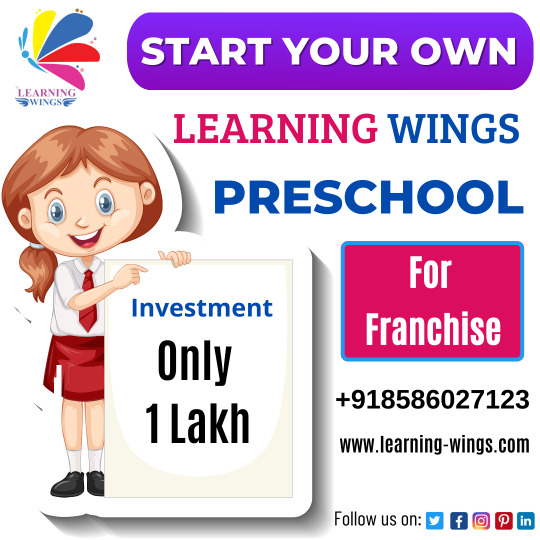
#playschool#learningwingsfranchise#learningwings#playschoolfranchise#bestplayschoolfranchiseindia#playschoolindelhi#learningwingsdelhi#business#franchise#investment#preschool#newbusiness#preschoolfranchiseopportunity
0 notes
Photo

Free Franchise Webinar By Learning Wings Affordable Pre School
Join Sunday, Jul 17, 2022
Timing:- 4 pm to 5 pm
Fill out the Webinar Form:- https://forms.gle/TiavY4UnnN9Tj8tq5
Join Zoom Meetinghttps://us02web.zoom.us/j/83278572811...
Meeting ID: 832 7857 2811
Passcode: 064922
1 note
·
View note
Text
Key Characteristics of MOOC: How Do They Impact Learning
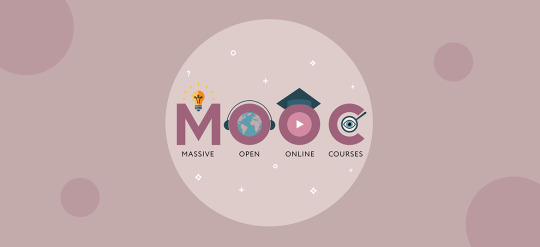
MOOCs (Massive Open Online Courses) are dedicated to large-scale interaction and engagement. These courses belong to the section of distance learning (DL). These have evolved from traditional learning to a modern synergetic environment. Moreover, a MOOC is a basic element of knowledge transfer and transparent communication.
Distance learning brought along several attributes to online learning. One of the key characteristics of MOOCs is the interactive user forums and discussion groups. These forums and discussion groups help build a community for online learners, professionals, educators, consultants, and assistants. MOOC is the recent development in distance learning. These massive open online courses are based on efficiency and give 100 students access to an online class of one professor.
The lectures, assessments, tests, assignments, and evaluations for a course and the professor’s expertise behind the content are not inexpensive and are not unique to a specific university in several instances. In this article, we have tried to throw some light on the characteristics of MOOCs and their impact on learning.
Important characteristics of MOOCs
MOOCs are available for everyone. These are free and are usually provided by the most trusted and eminent institutions. These online courses emit certain specific characteristics. So without further ado, let’s take a deep dive into the characteristics of MOOCs.
MOOCs Use Web Formats
MOOCs heavily depend on web formats and there can be different types of MOOCs depending on the web formats. Most of the video content that is streamed, simulates the presence of a trainer. MOOCs also use live streams to build a virtual classroom. Sometimes, the online trainer can organize live sessions with the students using tools like Ustream or Hangouts. This is an opportunity for the students to get in touch with the trainer, ask questions and clear their queries.
Synergetic Learning
MOOCs can easily create an in-class environment that includes the use of collaborative tools. These open courses support the emergence of learning communities and offer a hybrid distribution of knowledge. Every participant can contribute to this and enrich the course. Q&A forums, social media groups, meetups, are used to encourage a synergetic learning environment.
Knowledge Assessment
In addition to the content designed to convey information, MOOCs also offer tools to assess the smooth transfer and knowledge retention. These online courses offer a dynamic and interactive environment in the form of multiple-choice questions, essays, programmed tests, and fun-filled quizzes. Apart from that, MOOCs also offer certificates to the learners who complete the courses.
Time Limits & Deadlines
Time limitations and deadlines are the final characteristics of MOOCs. These online courses have specified start and end dates. The course content such as documents, videos, exercises, quizzes, essays, and MCQs (multiple choice questions) is delivered every week. The courseware is spread overtime for the learners. It is also an effective means to ensure that these courses are just like the traditional courses with weekly classes and home assignments.
MOOCs have drastically changed the online education industry. This is opening doors to new learning opportunities, discussion methodologies, and a brighter future for modern learners. We have checked out the characteristics of MOOC and how it is different from a traditional classroom environment which brings us to a question. How does it affect learning? Let’s walk you through it!
How MOOCs Impact Learning
We have seen how MOOCs work and what characteristics they have. Now let’s check how the different characteristics of MOOCs impact modern learning.
Heightened Educational Hype Around Digital Future
Decades ago, our teaching top-level administrations engaged with questions and issues about higher education in a digital environment. Today, those debates and conversations only populate the strategy documents, campaign materials and streamline the information exchange between students, professors, and administrative staff daily. Technology is constantly evolving and so is online education. This has created a huge hype around the future of digital education.
New Horizon For The Enthusiasts
Research holds a very special place at the universities and institutions and MOOCs have always helped the faculty and teaching staff focus on the teaching and learning practices. The faculty creating MOOCs often have experience in deep research, understanding of the course design, and learning. MOOCs pave the way for experimenting with blended learning and help the faculty and course creators witness a new horizon of education.
Team-based Courseware
Creating MOOCs requires the content curators and designers to collaborate in ways keeping in mind the changing modern education. The domain experts and SMEs team up with designers, researchers, software developers, and videographers to create each module of a particular MOOC. This not only allows each person to contribute their expertise but also increases room for discussion.
New Dimension For Experimentation
There are several challenges and obstacles to creating MOOCs including extended decision-making and shared governance. These issues slow down the institutions to implement change. Researchers and online learning enthusiasts have found that the organizational structures designed around MOOCs provide ample space for experimentation. This allows the content curators to implement new changes and innovation in learning.
Final Verdict
Down the road, the hype around MOOCs may be dying but its momentum is still paving the way for increased experimentation with thoughtful and innovative ideas for higher education. The Digital era is changing the way modern learners interact with each other which is quite useful when it comes to collaborative learning. Hope you now know how important MOOCs have become in the digital learning space.
Coursera, Udemy, and other platforms can give you what you want, but if you need customized solutions for your business idea, then we’d love to help you. DRC Systems is an Open edX® partner and we develop customized MOOCs and other courses.
Contact us today for more information!
5 notes
·
View notes
Text
Apprendimento - Learning
🌸Apprendimento🌸Si apprende e si resta nella comprensione quando ci sintonizziamo e cogliamo l’impercettibileche ci viene incontro08.09.2022 Poetyca 🌸🌿🌸#Poetycamente 🌸LearningWe learnand one remains in understanding when we tune inand we grasp the imperceptiblethat comes to meet us08.09.2022 Poetyca

View On WordPress
1 note
·
View note
Photo

Top Rated Overseas Education Advisor in Kolkata – Frame Learning
Want to study in Abroad? Contact Frame Learning, one of the best education consultants in Kolkata, offers best coaching for higher study in abroad at affordable price.
0 notes
Photo

We Don’t Need To Worry About Overfitting Anymore Author(s): Sean Benhur J Machine LearningWe Don’t Need To Worry About Overfitting AnymorePhoto by Mohamed Nohassi on UnsplashMotivated by prior work connecting the geometry of the loss landscape and generalization, we introduce a novel, effective procedure for instead simulta- neously minimizing loss value and loss sharpness. In particular, our procedure, Sharpness-Aware Minimization (SAM), seeks parameters that lie in neighbor- hoods having uniformly low loss; this formulation results in a min-max optimiza- tion problem on which gradient descent can be performed efficiently. We present empirical results showing that SAM improves model generalization across a variety of benchmark datasets[1]Source: Sharpness Awareness #MachineLearning #ML #ArtificialIntelligence #AI #DataScience #DeepLearning #Technology #Programming #News #Research #MLOps #EnterpriseAI #TowardsAI #Coding #Programming #Dev #SoftwareEngineering https://bit.ly/3n2d8Fu #machinelearning
0 notes
Link
Curate new training programmes, assess performance, nurture collaboration, and track progress with Hurix’s sophisticated e-learning solutions.
0 notes
Text
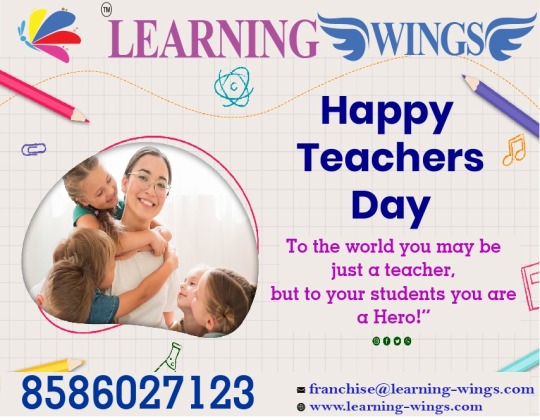
#learningwingsplayschoolindelhi#playschoolfranchise#learningwings#learningwingsfranchise#business#franchise#investment#playschool#newbusiness#preschool#preschoolfranchiseopportunity#happyteachersday#daycarecenter
0 notes
Link
https://static1.squarespace.com/static/54d3cb8be4b0703e7a5bd2ce/t/574e31061d07c03b4a486227/1464742154663/Ricardo+Dutra_Social+Dreaming+%28online+quality%29.pdf
http://www.ricardo-dutra.com/design-research
https://vimeo.com/168870115
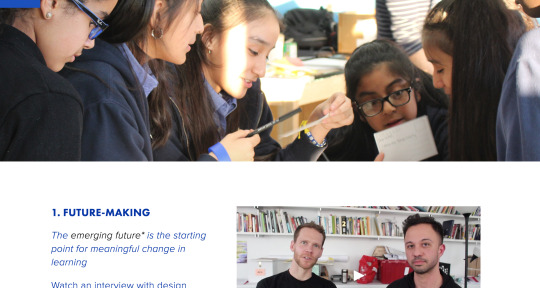
FLIP IT FORWARD
WELCOME
FLIP IT FORWARD IS A FUTURE-MAKING AND ACTION RESEARCH PROJECT, CO-DESIGNING WITH EDUCATORS, SCHOOLS AND STUDENTS TO CREATE
SOCIAL DREAMS
*
HOW MIGHT SOCIAL AND CULTURAL NORMS SHIFT IN THE FACE OF CHANGE?
As old structures around us collapse, social dreaming is the key skill that young people will need in order to imagine and build a new society
SOCIAL DREAMING | DOWNLOAD
In a context of accelerated change, learning should not be limited to 'downloading' information from books. Students cannot comprehend how to go forward without understanding the past - and they only look at the past with a sense of action if they get a sense of the future. Hence, developing agency in building what's next.
1. FUTURE-MAKING
The
emerging future
*
is the starting point for meaningful change in learningWatch an interview with design professor Elliott Montgomery on the challenges and possibilities of future-making as a learning lens in education
2. CONSTRUCTION OF MEANING
Meaning-making*
is the social-emotional process behind learningWe position meaning-making at the heart of real-world learning
3. SOCIAL AGENCY
Including
design iterations*
of action and
critical reflectionIs the student or teacher someone
with agency who is able to construct reality?
INQUIRING BACKWARDSknowledge comes from a process of inquiry(an act of investigation). By inquiring backward students learn how to find meaning and relevance in past experiences and how to bridge those with their present
“This has been creatively difficult.”
INSTRUCTION BOOKLET
INQUIRING FORWARD
The uncertainty of the future becomes the very possibility to imagine it. Inquiring forward is about stretching the students' ability to create future scenarios. This is not about predicting the future but giving students vision spaces - that are then used to frame their decisions and actions today
“This is for me a transformation tool because it allows students to look into the future and be a part of co-creating it.”
NEXT FUTURESTo speculate is about building alternative scenarios either for the future or the past. This allows students not to rely solely on 'futures' that have been given to them but rather to engage and actively create futures they want. By placing speculation in a learning space, our hypothesis is that teachers can start to see the gifts that students embody and enable their capacity to build new narratives
“Being speculative comes from a level of being able to navigate through the intuitive within oneself in comparison to only taking external cues. Just because a student does not learn in one format, it does not mean he or she is incapable. The act of being speculative about the future allows one to develop the capability of giving permission, which involves claiming and reclaiming.”
HOW The speculative approach can be used by the teacher to allow students to move from a problem-solving mindset into a dreaming, imagining, co-creative space. However It does not mean that students will be 'predicting' or 'making a bet' on the future. It is not about who gets it right. 1.building speculative maps to explore a question in its full possibilities - the map is an exercise to let go of deep held beliefs and opinions and be explorative 2.creating multiple scenarios - building possibilities, hence not one but many futures are built 3.speculating across time - speculations do not need only to be about the future, they can also be about the past and hence allow students to explore historical events with new lenses - asking questions such as 'what was the context taking place at the time of this event? what if this had happened instead of that? is there a chance this event could be seen in our present or future?'
“It is about instilling in young people the criticality that the futures we have been given are not the futures we can dream of – because someone has already framed them and built a narrative. Hence, they have been constructed.”
OUTCOMES
CREATIVITY & IMAGINATION: speculating alternative futures and pasts is not about 'problem-solving' but rather about opening spaces for imagination so students can think & see differently
MEANING-MAKING: when students can envision different futures or engage with the past there's tremendous creation of meaning - which leads to further engagement with their learning process and social agency
RELEVANT ACTION: once students understand new roles they can play in creating futures they want, they are better prepared to take relevant action in the world
CELEBRATE FAILURE & SUCCESS: understanding the future (and the past) as an act of creation reduces dramatically the nature of fear and the notion that there’s no fundamental thing called failure
PROTOTYPING THE NEXTIn learning for acting in the world it is essential students imagine what's next for issues and problems they are working on and create concepts & prototypes - it is about taking action with critical reflection while understanding their implications in the world
“We created a drone that delivers learning materials to students in rural areas so they can explore open-ended problems”
HOW In supporting students prototype the next, make it clear they understand it is not about a journey from "here" to "there" (present to future) but the recognition of a new point of reference for thinking - from which everything else emanates 1. consolidating insights collected from going to the edges of the system or from future/past speculations - insights help students establish a relationship of cause and effect 2. developing intentions mean translating the insights (learnings) into actionable ideas 3. building prototypes includes tinkering through features and clustering them to create more robust concepts as well as rounds of iterations in which students take their concepts to be tested in the real world
OUTCOMES
SOCIAL AGENCY: by creating prototypes and implementing ideas students understand the obstacles and benefits of taking relevant action in the world
CRITICAL THINKING: when implementation happens students can see and think upon the impact of their action and hence develop critical thinking
REAL WORLD LEARNING: students get the opportunity to think through problems and issues in multi disciplinary ways and understand through experience its direct impact in the real world
DO YOU WISH TO EXPLORE FURTHER?We partner with schools, organizations and governments to co-create programs, tools and experiences that can leverage our education system to its next level
PROGRAMSCo-creating programs with school leaders, teachers and students to build the system's capacity to be generative in preparing young people to address the 21st century challengesTOOLSDesigning physical learning tools and spaces that students and teachers can integrate into the curriculum, allowing more expansive and imaginative opportunities for learningEXPERIENCESProviding applied learning opportunities through experience design while linking classroom curriculum content with its possibilities for application in the real world
RICARDO DUTRABRAZIL
Ricardo is a design strategist, researcher and educator with a background from Parsons The New School for Design in New York
SONALI OJHAINDIA
Sonali is an Ashoka Fellow, social entrepreneur and educator with 20+ years of experience in learning and development
JANSON CHENGCHINA
Janson is a designer and founder of Dreamland, a venture empowering Chinese villages through design innovation
LOCATIONS
Mumbai 12/RR Krishnamurthi Building, Chuim Vil. Khar (West) 400052
New York 6 East 16th Street, NY 10001
vimeo
0 notes
Text
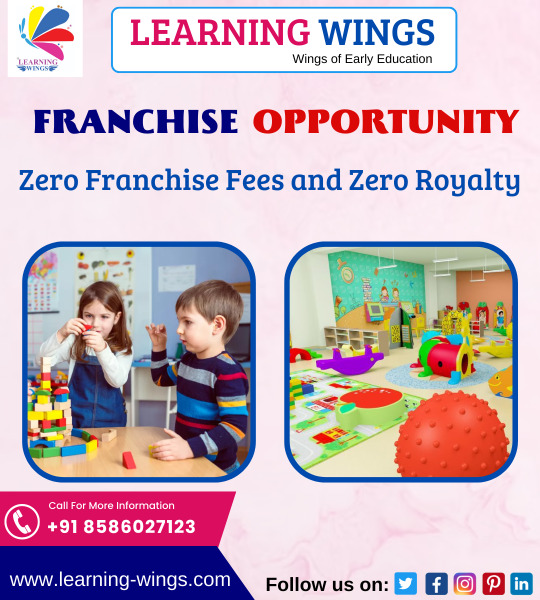
#playschool#learningwingsfranchise#learningwings#playschoolfranchise#bestplayschoolfranchiseindia#playschoolindelhi#learningwingsdelhi#franchise#business#newbusiness#investment#preschool#preschoolfranchiseopportunity
0 notes
